Preventing Algae Growth in Seedling Trays
2025-10-24 18:16:40
Every professional grower knows that nurturing healthy seedlings requires more than water and sunlight—it’s about creating a balanced, sterile, and well-aerated microenvironment. One of the most common obstacles to achieving this balance is algae growth in seedling trays.
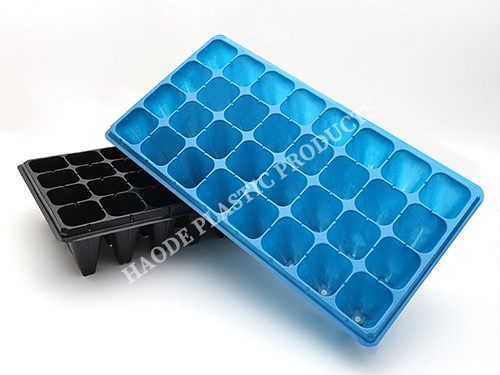
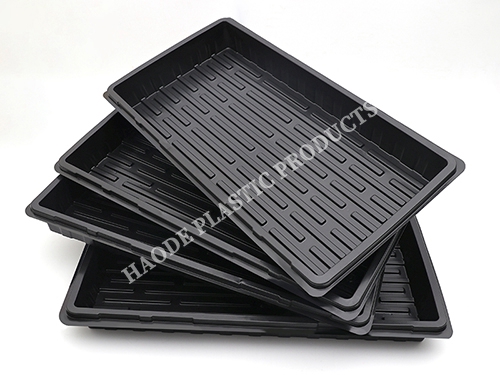
Algae thrive in the same humid and nutrient-rich environments that seedlings love. Unfortunately, when left unchecked, they can outcompete roots for oxygen, alter soil chemistry, and encourage unwanted pathogens. To protect your young plants, it’s essential to understand not only how algae form but how to stop them effectively.
For those using large-scale propagation systems, sourcing high-quality seedling trays directly from a China manufacturer with bulk supply capability ensures consistent quality, easier cleaning, and better long-term hygiene control.
1. Why Algae Thrive in Seedling Trays
Algae are photosynthetic organisms that require light, moisture, and nutrients—all abundant inside greenhouses and propagation areas. Over time, these conditions turn tray surfaces into ideal growth zones.
Main causes of algae buildup include:
·Overwatering and poor drainage, which leave stagnant moisture on tray surfaces.
·Exposure to direct sunlight on wet soil or transparent tray sides.
·Fertilizer runoff that enriches water with nitrogen and phosphorus.
·Limited airflow, allowing humidity to linger above the soil surface.
Even a thin algae layer can drastically alter the oxygen balance around seedlings, reducing germination rates and root vigor.
2. The Hidden Impact of Algae on Seedling Health
At first glance, algae appear as a harmless green film—but in reality, they compete for vital resources.
·Reduced oxygen exchange: Dense algae mats restrict airflow, starving young roots.
·Impaired water absorption: The slimy surface repels irrigation water, causing dry patches and uneven moisture.
·Pathogen attraction: Algae harbor bacteria and fungi that cause damping-off and rot.
·Light interference: On the tray surface, they block sunlight from reaching the root zone.
The result? Uneven seedling growth, stunted roots, and slower transplant recovery.
3. Tray Design and Material: Your First Defense
The structure and surface texture of nursery trays determine how easy it is for algae to attach and spread.
Smooth, non-porous materials are naturally more resistant, while darker trays help limit light exposure that algae need to photosynthesize.
Key design recommendations:
·Opaque dark trays: Reduce light reaching moist soil, minimizing algae photosynthesis.
·Efficient drainage holes: Prevent water pooling and stagnant moisture.
·UV-stabilized plastics (PP or HIPS): Resist degradation and allow repeated sanitation.
·Detachable or modular cells: Make thorough cleaning and drying more efficient.
Modern China manufacturers of propagation trays integrate these designs into large-scale production lines, offering bulk supply options with enhanced anti-algae performance .
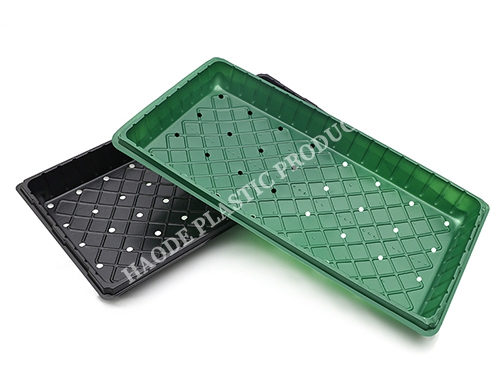
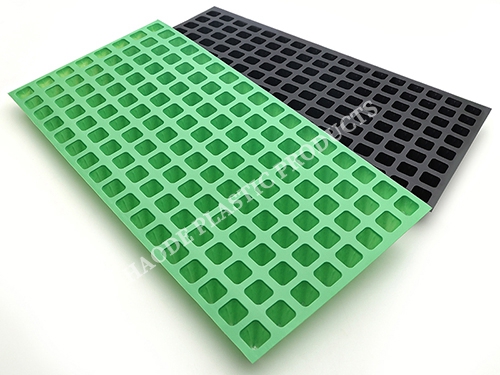
4. Daily Cultural Practices to Prevent Algae
Even with perfect trays, algae can return if daily management is inconsistent. These simple yet powerful methods help keep them away:
a. Adjust watering schedules
Avoid keeping surfaces constantly wet. Allow the top layer of soil to dry slightly before watering again. Bottom watering methods also minimize surface moisture exposure.
b. Control light
Cover unused tray sections and avoid placing trays in direct sunlight. A thin layer of mulch or shade net can reduce light intensity effectively.
c. Improve airflow
Install small fans or ventilation ducts to move moist air out of enclosed spaces. This not only limits algae but also strengthens seedling stems.
d. Balance fertilization
Avoid nutrient-rich runoff. Dilute liquid fertilizers and water evenly so that nutrients don’t accumulate on the soil surface.
e. Maintain hygiene
Clean trays between uses with mild hydrogen peroxide or diluted bleach. Always rinse and dry thoroughly before reuse.
5. Eco-Friendly Methods for Algae Suppression
Growers looking for safe, sustainable solutions can use natural suppressants instead of chemical algaecides:
·Cinnamon or neem extracts: Naturally antifungal and safe for seedlings.
·Beneficial bacteria (e.g., Bacillus subtilis): Compete with algae for nutrients.
·Fine sand or perlite top layers: Physically block light from reaching algae spores.
These options maintain a balanced microbiome while keeping algae populations under control .
6. The Role of Quality Manufacturing in Prevention
Long-term algae control depends on the durability and design of your seedling trays. Poorly molded trays with microcracks or rough surfaces trap moisture and organic residue—creating ideal algae breeding zones.
High-quality China manufacturers utilize precision molds and automated production to ensure smooth finishes and consistent cell shapes. Their bulk supply capability also enables growers to replace or scale up trays efficiently, maintaining cleanliness across multiple growing cycles.
For professional nurseries, this reliability translates into better sanitation, faster transplanting, and more uniform seedling development.
Conclusion
Preventing algae in seedling trays isn’t just about aesthetics—it’s about plant health and production efficiency.
By understanding the conditions that promote algae growth and using trays designed for easy cleaning, growers can protect their seedlings from invisible competition.
Partnering with a trusted China manufacturer offering bulk supply of durable, UV-resistant, and hygienic trays ensures a cleaner propagation system and stronger seedlings ready for transplanting. In short, cleaner trays mean healthier roots—and healthier roots mean higher yields.
References
GB/T 7714:Li H, Wang C, Zou H, et al. Structural Design and Performance Test of Biomass-Based Nursery Trays[J]. Sustainability, 2022, 14(15): 9101.
MLA:Li, Hailiang, et al. "Structural Design and Performance Test of Biomass-Based Nursery Trays." Sustainability 14.15 (2022): 9101.
APA:Li, H., Wang, C., Zou, H., Sun, H., Wang, H., Yu, Z., ... & Liu, X. (2022). Structural Design and Performance Test of Biomass-Based Nursery Trays. Sustainability, 14(15), 9101.

The CNC Seed Braiding Machine is a high-precision, fully automated agricultural equipment s...
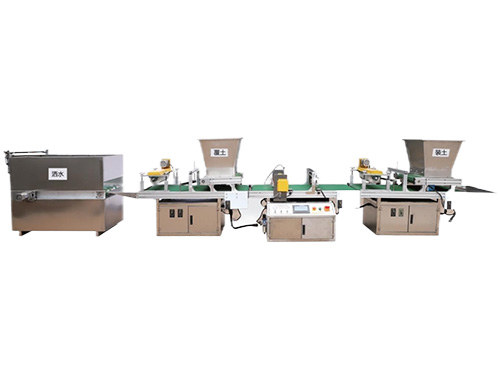
It adopts electrical integration and can be started by pressing the fully automatic button ...
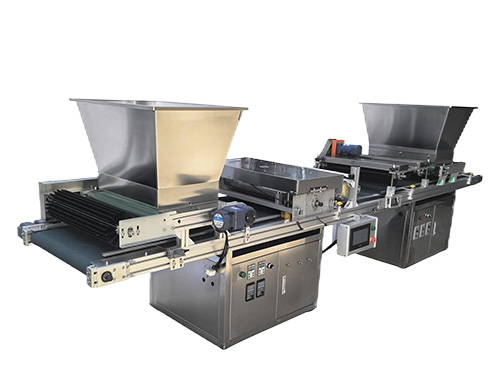
The XP750 seeder has stable performance, excellent product quality, simple and convenient o...
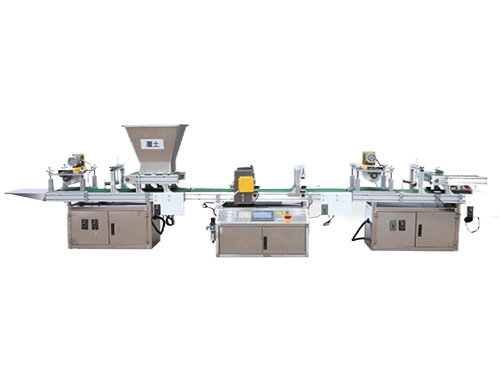
It adopts electrical integration and can be started by pressing the fully automatic button ...



